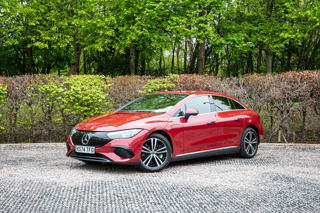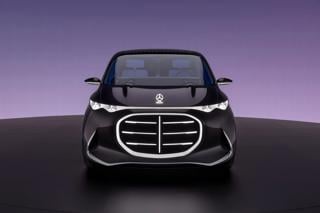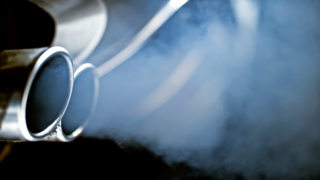A row has broken out between Mercedes-Benz and the European Commission over a new type of gas for air conditioning units.
European rules came into force at the start of the year that require manufacturers to use a new gas called HFO1234yf, which is less polluting than the previous air-con coolant, R134a.
All cars type-approved from January 1, 2011, and which have been produced after January 1, 2013, must use the new gas. R134a is now banned.
However, tests carried out by Mercedes-Benz suggest that HFO1234yf is at risk of self-igniting in the event of an accident if the air-con pipe fractures (see panel). When it does, the company said, it releases dangerous hydrofluoride gas which can disable and kill even in very small quantities.
As a result, Mercedes-Benz, backed by the German authorities, has decided not to use the new coolant gas in its latest models, which includes the A-Class.
Now, the European Commission has hit back, claiming Mercedes-Benz’s tests are “controversial” and that any risk identified may be a result of the manufacturer’s own design.
European Union industry commissioner Antonio Tajani says he will target Mercedes-Benz owner Daimler over its continued use of R134a. He told the European Parliament’s Environment Committee that he will commence infringement proceedings against member states if evidence is provided that they are failing to act.
In response, Mercedes-Benz says the A-Class has been granted type approval by the German authorities which means it can be sold across Europe.
“We’re still fitting the ‘tried and tested’ existing refrigerant, and not the new gas. We’re also working on developing a new CO2-based system,” said a Mercedes spokesman.
“As far as we are concerned, we have type approval for the A-Class which makes it legal for the life of the car.”
However, the EC continues to argue that any certificate of competence for new models using R134a coolant is invalid.
Member states “have a clear obligation to refuse registration of vehicles which are not in compliance”, it said.
The commission “may launch infringement proceedings against member states not applying the legislation – either those responsible for invalid vehicle type-approvals or those which allow the registration of new vehicles which are not in compliance”, it added.
“Under the non-compliance procedure started by the Commission, the first phase is the pre-litigation administrative phase, the ‘infringement proceedings’, that enables the member states to conform voluntarily with the requirements of the law,” explained an EC spokeswoman.
This could have significant implications for Mercedes-Benz. The company predicts sales of about 25,000 A-Class cars this year in the UK, of which around half will be to fleets.
The Department for Transport said it was monitoring the situation. It added that it would comply with the EC’s requirements, but indicated it had yet to receive a firm directive.
A spokesman said: “We have not seen any evidence that it poses any risk. The European Commission is leading a review to ensure a consistent approach for all vehicle manufacturers and purchasers.”
Most manufacturers have complied with the directive. However, Volkswagen Group has also refused to install the new coolant across its brands.
Instead, it claims its engineers have designed a new CO2-based coolant – R744 – which adheres to the EC environmental guidelines and it is in advanced talks with regulators to get the green light to use the new variant. It plans to roll out the new technology across its entire vehicle line up.
While the new rules currently apply only to vehicle type-approved after January 2011, from 2017 every new vehicle must be installed with the new coolant.
Daimler’s view: ‘extremely toxic’
“Daimler has performed a series of tests that replicate the possible consequences in case HFO1234yf leaks into a hot engine compartment in consequence of a frontal collision.
While previous testing (in laboratory settings) had shown the refrigerant to be only mildly flammable the results of this testing involving a hot engine compartment were dramatic.
Only seconds after the release of HFO1234yf the engine compartment of the test vehicle was in flames.
Furthermore, the fire in the engine compartment led to chemical reactions creating hydrogen fluoride, an extremely toxic substance which in the short test led to extensive etchings of the windscreen.
The Daimler test results were replicated and confirmed numerous times also in presence of representatives of the German Type Approval Authority KBA and other automotive OEMs.
All Mercedes-Benz car lines have a valid EC type-approval and come with a valid CoC paper.
CO2, with a GWP (Global Warming Potential) of 1, is by far the most promising solution, as it is both environmentally acceptable and safe. We have therefore given our engineers the clear commission to develop the CO2 air-conditioning system.”























john colvin - 05/02/2014 13:33
With the great difficulties experienced in locating repair agents with equipment capable of use on HFO1234yf, vehicles. is there a database of repair agents anywhere? I work for a vehicles importer, our dealer database is reluctant to purchase such expensive equipment and on investigating we have only found 2 repair agents? even though the motor industry is rebelling against this new gas system, surely with new cars using it there should be a network of repair agents making a fortune due to exclusivity of HFO1234yf equipped aircon agents?